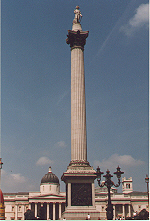
Nelson's Column
Charlie Nelson's Blog
Reserve Bank of
Australia's Dilemma
The Reserve Bank of Australia (RBA) faces a dilemma. The expected resources construction boom is likely to lift Australia's economic growth rate but to also lift consumer price inflation. The RBA is charged with keeping inflation in the range 2% to 3% averaged over the course of the economic cycle. Here are some extracts from the RBA board's May 2011 meeting minutes.
“Underlying inflation to be in the top part of the target band over the next couple of years and … to be above 3% by the end of the forecast period.”
“Members noted that the significant divergences between different sectors of the economy presented challenges for policy-making, but that monetary policy had to be set for the needs of the overall economy.”
“Members judged that if economic conditions continued to evolve as expected, higher interest rates were likely to be required at some point if inflation was to remain consistent with the medium-term target.”
It seems that the RBA is determined to let several important industries wither to make room for the resources construction boom.
The federal government's budget, also released in May, agrees.
“Unfortunately for the nation’s embattled retail, manufacturing, housing and tourism industries, Treasury does not see much room for improvement in consumption despite a steady decline in unemployment and solid wage gains.”
Australian Financial Review report on the 10 May federal budget, 11 May 2011.
The retail, manufacturing, housing, and tourism industries employ about one-third of the workforce. When the mining construction boom peaks and begins to wane, in about five years time, in what state will those industries be in? If these industries are allowed to wither as proposed by the RBA and Treasury, will we have invested enough in tourism or will it be a dying industry? Will we still have a vehicle manufacturing industry? How high will unemployment be when employment in mining construction starts to wane?
The dilemma is similar to that faced by an investor. Investors should have a diverse portfolio and Australia should be investing in a diverse range of industries rather than putting all our eggs in one basket.
Given that this resources boom is a once in a century event, maybe once in a millennia, and that its impact on inflation may only last a few years there is a case for temporarily changing the RBA's target band for inflation.
What is sacrosanct about an upper limit of 3% inflation. Could it not be raised to 4% for a period of five years? We survived much higher rates in the 1970's and 1980's.
This would not represent an unmanageable rate of inflation and such a policy would mean that other important industries can survive the resources boom in reasonable shape.
I wrote a letter to the Australian Financial Review suggesting this temporary adjustment to the tolerance band. Somewhat to my the surprise it was published on 30 May 2011, page 51.
Charlie Nelson
May 2011
How did the Reserve Bank and economic forecasters not see how weak Australia's economy was in 2011?
Update 9 August 2011
It is now more than two months since my letter was published - and lo and behold the Australian Financial Review has published an opinion piece by Jonathan Reeves (financial economist at the Australian School of Business at the University of NSW) suggesting that the Reserve Bank raise its aim to 4%! (AFR, 9 August 2011, page 63). He did not acknowledge my earlier suggestion of exactly the same policy.
Now that some academics are belatedly getting on board with this policy suggestion perhaps it will not be too long before we hear the same thing from market economists. Perhaps, given the turmoil on world stock markets and fears of another recession in USA and Europe, the Treasurer and Governor of the Reserve Bank will eventually come to the same conclusion. But it may all be academic - the Reserve Bank may be forced into cutting interest rates soon anyway.
Update 25 April 2012
In November and December 2011, the Reserve Bank cut interest rates by a total of 0.5% - only a few months after threatening higher interest rates.
By 24 April 2012, the consumer price index for the March quarter 2012 confirmed that inflation was at the lower end of the Reserve Bank's tolerance band. Less than 12 months earlier, their forecast was that it would exceed the maximum they would tolerate (3%). How did they get that forecast so wrong?
"The Reserve made a mess of it. It kept overestimating growth. It kept overestimating inflation. It raised interest rates far too high, and has kept them too high. It has no more excuses. It must now fix the problems it created". Tim Colebatch, Economics Editor, The Age, 25 April 2012.
Now the Reserve Bank seems poised to cut interest rates again - by 0.25% in May and more soon after. But have they got it wrong yet again? Is Australia's economy now showing signs of stronger growth? See "17 Reasons for Confidence in Australia's Economy" at www.foreseechange.com.au.